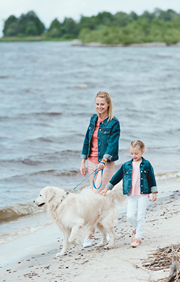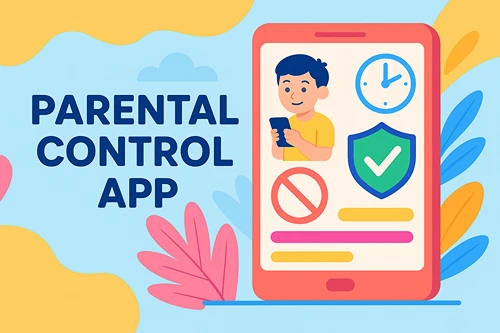Evaluating Your Family’s Lifestyle Before Getting a Pet
If you’ve heard it once, you’ve heard it a thousand times: “Please, please, please can we get a pet?” Your kids have begged for any kind of little creature to take care of — a dog, a cat, a hamster, a goldfish, or even that frog they managed to sneak indoors. So far, you have managed to resist their pleas.
While family pets are good for kids for a variety of reasons, they are not always the right fit. However, as your kids get older, you wonder whether teaching kids responsibility through pet ownership might be a good idea. Taking care of animals offers many growing opportunities, letting kids learn about the importance of commitment to the value of empathy and the power of grief beyond picture books.
Think your family’s ready to take on a pet? Consider the following questions before deciding to bring a pet into the family home.
How Old Are Your Kids?
The younger your kids are when you get a family pet, the more the responsibility of caring for the pet will fall on your shoulders. What’s more, younger kids might struggle to treat pets appropriately, which can put them at risk of injuries like bites or scratches or else at risk of causing harm to the pet. For the most part, pediatricians warn against introducing a new pet before a child is about four years old.
Even if your kids are older, you may want to build up their responsibility and maturity before saddling your family with a pet. Consider creating chore charts for your kids so they can develop a habit of completing tasks around the house in preparation for regularly caring for a pet. If your kids dutifully complete their chores, they may truly be ready to take on a pet.
How Active Is Your Family?
Pets are living creatures that deserve respect and care. While different kinds of pets have different demands, all pets require some time and energy from their owners daily.
Your family might not have any time or energy to spare. If you have a demanding career, if your kids are engaged in all activities, or if you frequently travel, your family is likely too active to ensure that a pet receives the care and attention it needs. Unless you expect to radically change your family’s lifestyle to accommodate the pet, you need to think critically about every family member’s capacity before bringing a living creature into your home.
How Much Space Do You Have?
All animals need their area to relax and feel safe; some animals require more space and some less. Unfortunately, the fact is that larger homes tend to be better suited to the addition of pets, regardless of type, because they have square footage to spare.
As you are considering acquiring a pet, you should consider how much space you have to give your new family member. Smaller pets require less space to feel happy and secure, so they may fit in perfectly when a larger animal does not. If you don’t have room for a husky or a German shepherd, adopting small pets may suit you best.
Do You Have the Disposable Income?
There is no such thing as a free pet. Even if you are willing to keep that from your kids found as your family pet (which is certainly not recommended), you will be spending money on all manner of pet accouterments, from its enclosure to its food to regular veterinary care.
Larger pets cost more per year than smaller pets, but any animal you bring into your family will add to your monthly expenses. You need to be sure that you can afford to pay for a pet before you commit to caring for it for the rest of its life.
What Kind of Pet Do You Want?
If all signs thus far point to yes, you have a final important decision to make: What kind of pet? You might already have a preference for a size or type of pet, but you and your kids should put some time into researching a variety of pet options to make sure you are selecting a friend that fits your family’s needs and interests.
If you are set on adopting a dog, you and your kids need to know everything about caring for a dog before it places a paw past your door. You should get a sense of the appropriate breeds of dog for your family and what toys and types of activity they might enjoy.
You might enroll in some training courses, to help little ones understand how to behave around dogs and to equip older members of your family with vital skills. For instance, you need to know how to perform dog CPR in case your furry friend chokes on something dangerous.
Then again, you might be open to starting smaller, with a pet more easily contained in a cage or terrarium. During the research phase, you should look into a range of low-effort pets, including exotic options like hermit crabs, chinchillas, or axolotls.
Your family might be ready for its first pet — or it might not. Before you give in to your child’s pleas, every member of your family should think long and hard about what it means to have a pet and whether everyone is ready for the changes a pet will bring.
About the Author
 Katie Brenneman is a passionate writer specializing in education, mental health, family lifestyle and online safety. When she isn’t writing, you can find her with her nose buried in a book or hiking with her dog, Charlie. You can follow her on Twitter.
Katie Brenneman is a passionate writer specializing in education, mental health, family lifestyle and online safety. When she isn’t writing, you can find her with her nose buried in a book or hiking with her dog, Charlie. You can follow her on Twitter.





